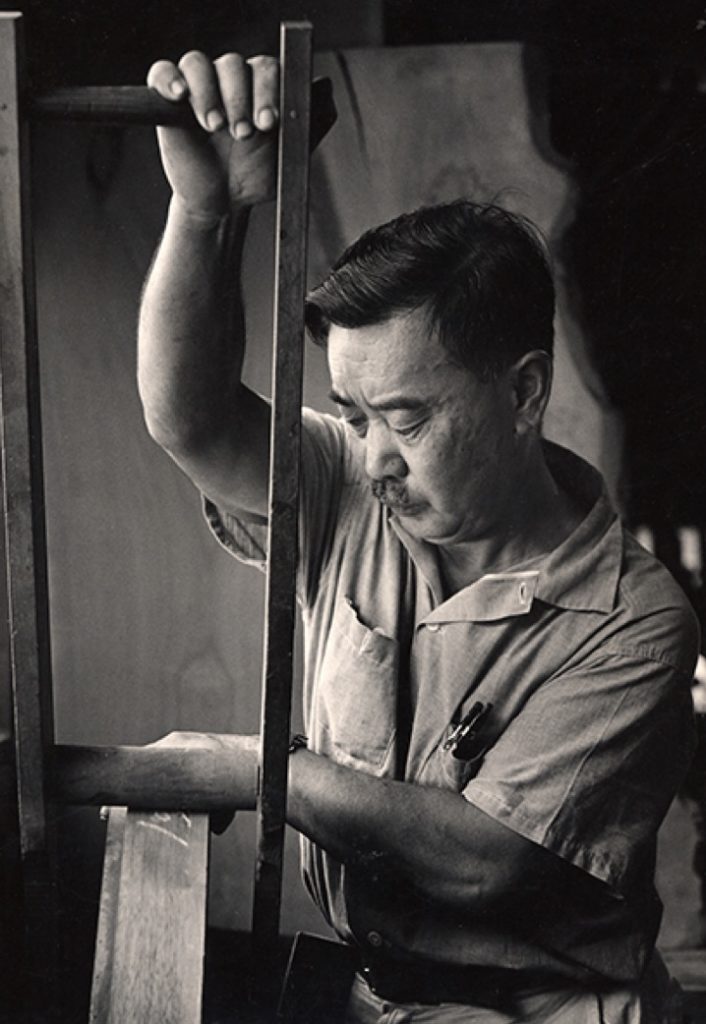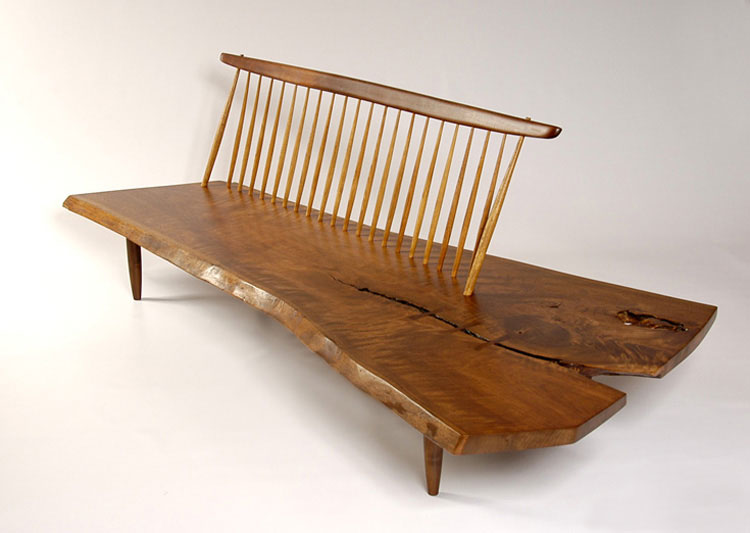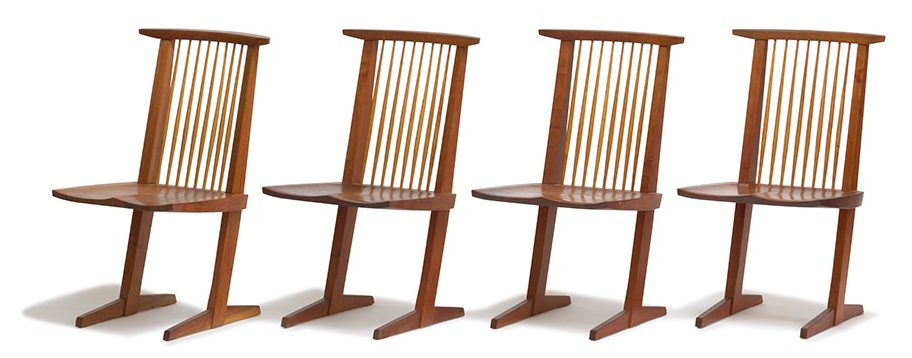Have you heard of George Nakashima? Everyone is talking about Eames, an iconic couple known for their modernistic designs. But, they had a contemporary designer whose furniture may be just as recognizable, even if his name isn’t. It’s George Nakashima. While not a household name, he wasn’t overlooked. He received some of the highest awards, his works are still in demand as art and furniture, his workspace has been preserved, and his passion for peace continues even though he died almost twenty years ago.

His woodwork and furniture are probably best known. Modern design can be reduced to simple lines and curves artfully integrated for form and function. George Nakashima merged that approach with natural elements combined with traditional Japanese techniques. The result is simple, efficient, organic, and so well executed that the finesse required isn’t obvious until someone looks closely at his work.
He was an American, born in Spokane, Washington, and a graduate of the University of Washington. That start made him familiar with the massive trees of the Pacific Northwest, particularly, the Hoh Rainforest. He studied architecture, traveled the world, and soon applied his training in the States and in Japan. Soon after he returned home to teach in Seattle, he was interned in Camp Minidoka. That injustice forever influenced his life and career. One of the greatest influences during that time was meeting a master of Japanese woodworking, Gentaro Hikogawa. Nakashima’s iconic butterfly joints came from that training.

A butterfly joint looks like a flat dovetail joint. Two opposing trapezoids interlock adjacent slabs of wood without nails or other fasteners. It was a technique that benefited his desire to take the simplicity of modern lines (which also were inspired by not-so-modern Shaker culture) with the natural beauty in wood grain and the organic curves inherent in wood that lies just beneath the bark.

A typical design is modern/Shaker legs and back for a chair or bench; a thick slab of wood, planed flat and possibly butterflied together as the seat; with the smoothed, curved edge of the original wood. He didn’t just pick up piece of lumber and stick them together. As Nakashima said in a 1979 interview;
“When I’m making something out of a piece of wood, I have a long dialogue with it, sometimes for years. I have to find my own relationship with the spirit of a tree, and pretty soon, the wood evolves as a form.”
—The Legacy of George Nakashima, by Crissa Shoemaker DeBree, Bucks County Courier Times
Seeing the shape of the tree, intuiting the possible grain underneath, and working with rather than against nature, made him modern without being industrial.
His work deviated from the typical to include coffee tables, credenzas, many of the basic functional furniture that can also be enhanced by artistry.

At auction, his pieces have reached as high as $822,400.
Much of his work came together in Pennsylvania. After he was released by fellow architect, Antonin Raymond, he moved to New Hope, PA to establish a studio. His work continues there at the George Nakashima House Studio and Workshop and the Nakashima Woodworkers Furniture Studio.
The New Hope location became more than a studio. Other woodworkers continue working there, but it is also the home of his Foundation for Peace.
“Once the first Altar for Peace was placed by George Nakashima at the Cathedral of Saint John the Divine in New York, we looked to the broader George Nakashima vision for a world encircled by magnificent symbols of peace. We set our path to be most inclusive of all the peoples of the world – and the Altar for Peace became the Sacred Peace Tables, consecrated by clergy and aspiring to peace among peoples joining the American, European and South Asian continents. We look to the continent of Africa next.”
The site has been recognized first on the National Registry of Historic Places, elevated to a National Historic Landmark, and is now in consideration as a World Monument.
George Nakashima received one of the highest awards possible in 1983 when the Emperor of Japan honored him as a recipient of the “Order of the Sacred Treasure”.